In "The Necklace," the irony really nails how Mathilde's longing for wealth leads to a bigger truth about happiness. She borrows a glamorous necklace, thinking it will bring her joy and status. But after losing it, she faces years of hard work to pay off a debt for an expensive replacement. In the end, she discovers the original necklace was just a fake! This twist shows how chasing after shiny things often brings trouble rather than joy. It teaches us that true happiness comes from inside, not from what we own. Stick around, and you'll uncover even more insights!
Key Takeaways
- The necklace symbolizes the allure of material wealth, which ultimately leads to Mathilde's downfall and suffering, illustrating the larger irony of life's pursuits.
- Mathilde's belief in the necklace's value reflects society's misguided priorities, emphasizing the irony of valuing appearance over genuine fulfillment.
- The situational irony of the necklace being fake contrasts with Mathilde's sacrifices, showcasing the dangers of chasing superficial ideals.
- Mathilde's transformation from elegance to hardship highlights the irony that societal validation comes at the cost of true personal worth and happiness.
- The narrative critiques materialism, revealing that the quest for status often results in unexpected consequences, mirroring the irony in Mathilde's life.
Overview of "The Necklace"
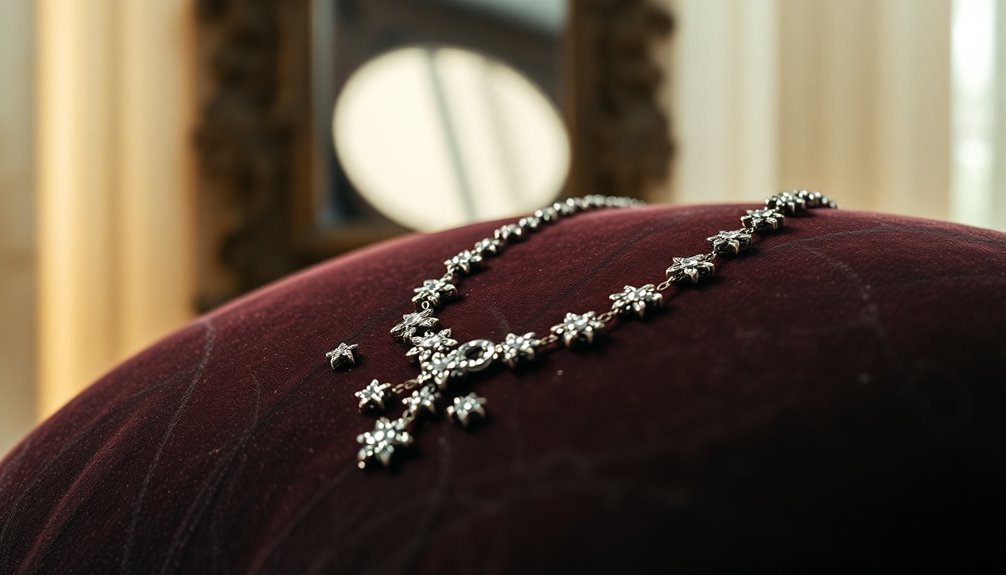
In "The Necklace," Guy de Maupassant masterfully explores the theme of discontent through the life of Madame Mathilde Loisel, a woman yearning for a more glamorous existence. Mathilde feels unhappy with her middle-class life. She dreams of wealth, luxury, and admiration.
To elevate her social status, she borrows a beautiful diamond necklace from her wealthy friend, Madame Forestier, believing it will bring her happiness at a high-society ball.
However, after the ball, disaster strikes! Mathilde discovers that the necklace is missing. This leads her and her husband to work tirelessly for ten years, struggling to pay off the debt for a replacement necklace.
The story takes a surprising turn when Mathilde learns from Madame Forestier that the necklace she borrowed was only a fake, worth a tiny fraction of what they spent.
This twist reveals the irony of Mathilde's suffering over a material possession that held no true value. The story highlights how chasing superficial status can lead to unexpected consequences.
Maupassant's tale reminds us that true happiness doesn't come from things but from appreciating what we have.
Symbolism of the Necklace
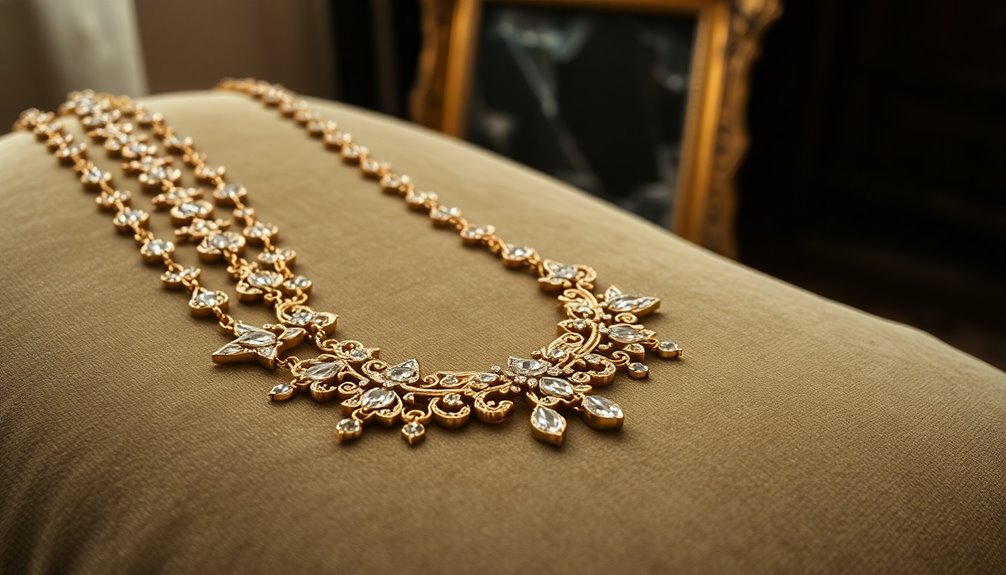
The necklace in "The Necklace" stands as a powerful symbol of Mathilde Loisel's aspirations and the societal pressures that drive her discontent. This beautiful piece represents her longing for wealth and a luxurious life, but it also leads her to a path of hardship. Mathilde believes that wearing the necklace will elevate her status and bring her happiness. However, the irony unfolds when she discovers that the necklace she lost is just a fake, worth only five hundred francs, while she struggles to replace it with a thirty-six thousand franc one.
Here's a closer look at the symbolism of the necklace:
| Symbolism | Meaning |
|---|---|
| Mathilde's Aspirations | Represents her desire for wealth and status |
| Society's Pressure | Highlights the materialistic ideals that consume her |
| Hardship and Regret | Reflects the consequences of chasing superficial appearances |
Ultimately, the necklace reflects Mathilde's life story—a journey filled with aspirations, irony, and the realization that true happiness doesn't always come from wealth. Through her experiences, we learn that the pursuit of material things can lead us to unexpected hardships.
Irony and Its Implications
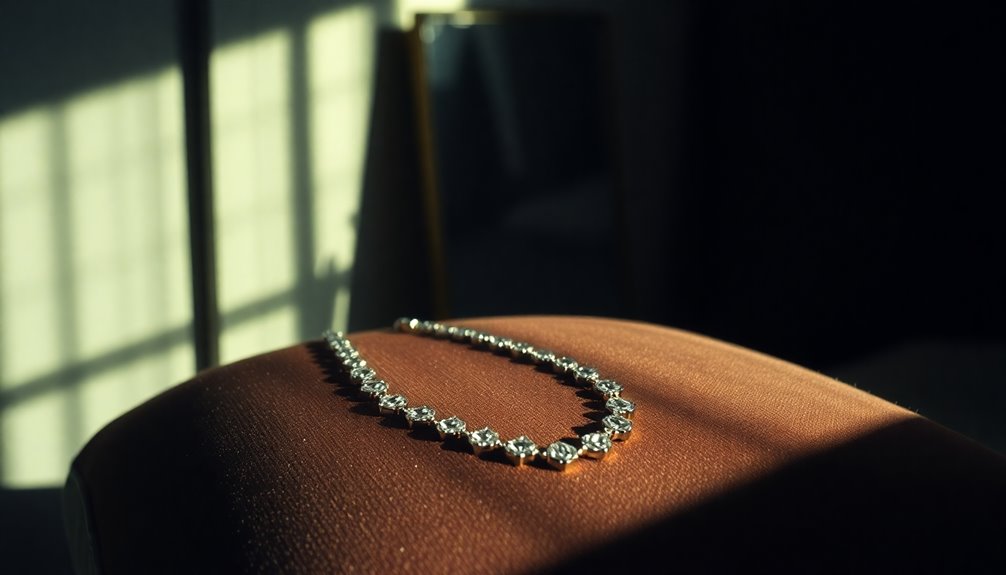
Revealing the harsh truth behind Mathilde's aspirations, the irony in "The Necklace" serves as a poignant reminder of the dangers of valuing material wealth over authenticity. Mathilde sacrifices so much to replace the borrowed necklace, believing it will bring her happiness. Yet, in a twist of fate, she discovers that the necklace is a fake! This situational irony highlights how her dreams of wealth lead her to a life of hardship.
The larger irony here is that Mathilde chases societal pressures, thinking that beauty and status can be bought. The dramatic irony adds to the story's depth, as you, the reader, know the necklace's true nature before Mathilde does. This makes you see how her vanity blinds her to what truly matters.
The contrast between Mathilde's initial view of the necklace as a symbol of beauty and its ultimate revelation as worthless shows how materialism can mislead us. In the end, Mathilde's journey teaches us that true fulfillment comes from within, not from the pursuit of superficial appearances.
Societal Commentary on Materialism
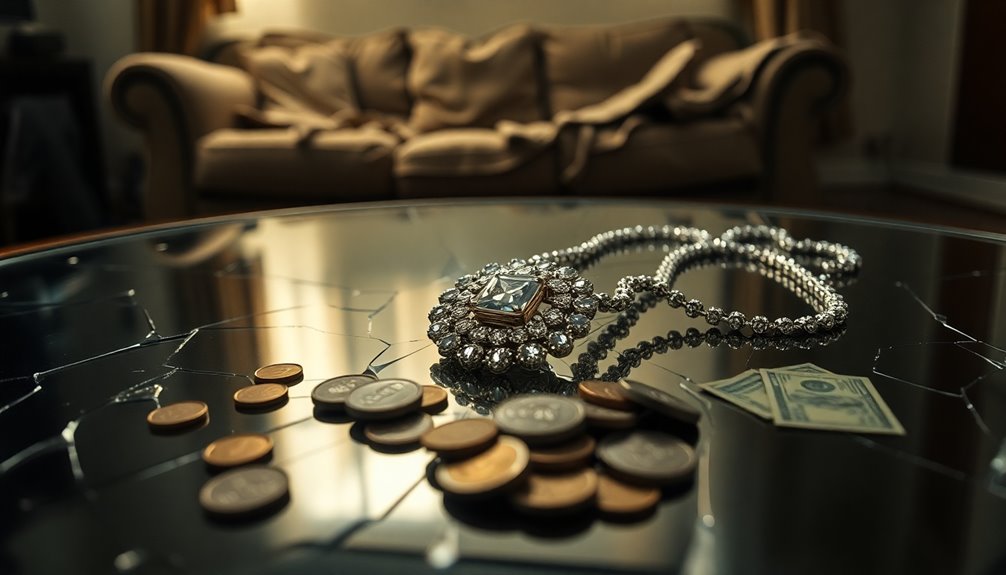
While chasing after societal validation through material possessions, Mathilde unwittingly becomes a victim of her own aspirations in "The Necklace." This narrative critiques a culture that equates happiness with wealth, illustrating how Mathilde's belief that luxury will fulfill her ultimately leads to her downfall.
Maupassant uses the necklace as a powerful symbol of illusion and superficiality. Mathilde thinks that by wearing it, she can impress others and gain the wealth she so desperately desires. However, the irony lies in how this pursuit of appearances leads to dire consequences.
After losing the borrowed necklace, Mathilde spends ten hard years working to repay the debt, only to realize that her dreams of wealth were built on a false foundation.
This story serves as a cautionary tale against the dangers of materialism. Mathilde's journey highlights how society pressures individuals to prioritize status over authenticity.
It reminds us that true worth isn't found in shiny objects or wealth but often lies hidden beneath the surface. By following Mathilde's tragic path, we learn that chasing after material possessions can lead to a life filled with disillusionment and regret.
Character Analysis of Mathilde Loisel
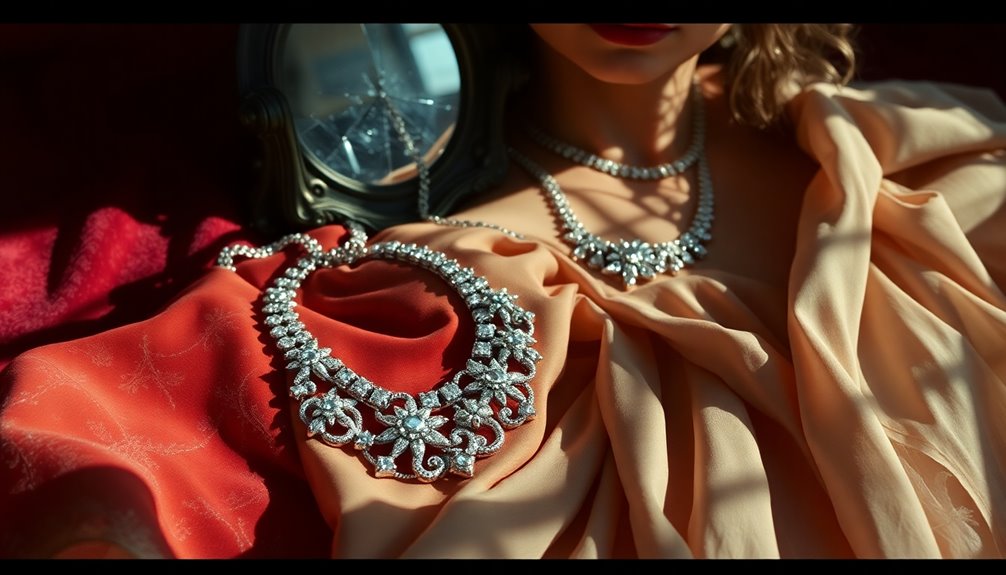
Mathilde Loisel's yearning for a glamorous lifestyle drives her character throughout "The Necklace." Feeling entitled to luxury, she believes that beauty and wealth are essential for happiness and social acceptance. This belief leads her to envy her richer friends, particularly Madame Forestier. She borrows a necklace for a ball, hoping to shine, but this decision sets the stage for her downfall.
Her life transforms dramatically after losing the borrowed necklace. Mathilde spends years paying off the debt, which brings her face-to-face with hardship. You can almost picture her:
- Tattered clothing, once elegant
- Hands worn and calloused from hard work
- A face that once sparkled, now lined with worry
- Dreams of luxury turned into a daily grind
- The heavy weight of pride that burdens her spirit
Through Mathilde Loisel, Guy de Maupassant enhances the irony in "The Necklace." Her journey shows the irony and symbolism behind her quest for status.
After years of poverty, Mathilde learns that true beauty and worth don't come from possessions but from within. Her story is a reminder of the dangers of pride and the societal pressures we face.
Frequently Asked Questions
How Is the Irony of the Necklace Symbolism of a Larger Irony in Mathilde's Life?
The irony of the necklace highlights how Mathilde's dreams of wealth lead her to a life of struggle.
You can see how she sacrifices so much for something that isn't real. This shows her misplaced priorities, as she believes that status brings happiness.
Instead, it brings her suffering. It's a reminder that valuing appearances over true happiness can lead to unexpected and often painful consequences in your own life too!
What Does the Necklace Symbolize and Irony?
The necklace symbolizes Mathilde's longing for wealth and status. She believes that having nice things will make her happy.
The irony is that she sacrifices so much to replace a necklace that turns out to be fake! This shows how chasing after shiny objects can lead to hard times.
Instead of finding joy, Mathilde faces a tough reality. Her story teaches us that true happiness isn't about material things but about what really matters in life.
What Is the Irony in the Necklace Quote?
The irony in "The Necklace" is really striking!
Mathilde borrows a beautiful necklace, thinking it'll make her look wealthy and admired. Instead, when she loses it, she faces years of hard work and struggle to repay the debt.
In the end, she learns the necklace was actually fake! This twist shows how her desire for luxury leads to a much tougher life, making us think about what really matters.
Isn't that surprising?
What Is the Irony About Matilda's Struggles to Pay for the Replacement Necklace?
The irony in Mathilde's struggle to pay for the replacement necklace is truly striking.
She works for ten long years, sacrificing her comfort for a necklace that was actually fake! She thought she'd gain wealth and status, but instead, she ends up in poverty and hardship.
It's like chasing a mirage! This shows how desperately wanting to appear rich can lead to a life of struggle and disappointment, turning dreams into a reality she never wanted.
Conclusion
In the end, "The Necklace" shows us that what we value can lead to surprising twists. You might think it's just about a fancy piece of jewelry, but it's so much more! Mathilde's story teaches us that chasing material things can blind us to what really matters. Isn't it exciting to discover deeper meanings in stories? So, the next time you read, look for those hidden messages, and remember: true worth isn't always shiny!











